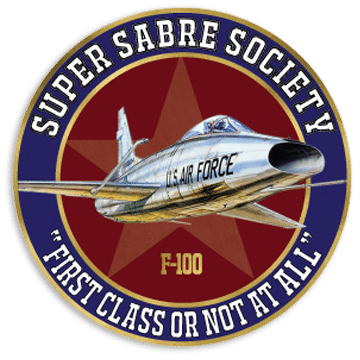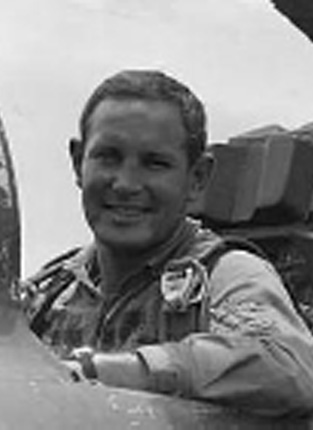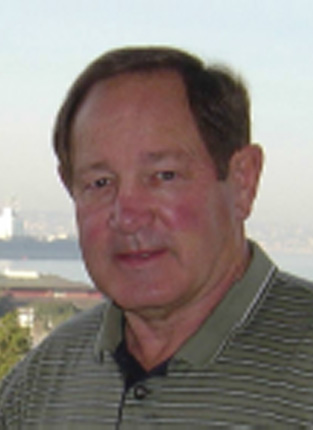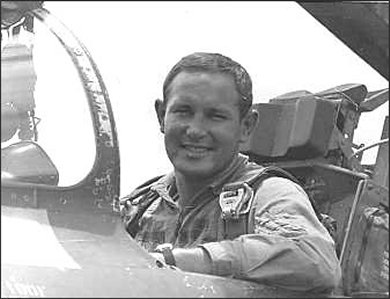Misty 54
“And they even paid us to fly these magnificent machines!” that’s the way Steve remembers his time in service.
Steve Amdor arrived at the Air Force Academy in 1961 as a member of the Class of 1965. Coming from a farm in Illinois, a military institution like the Academy was quite a shock. He arrived early in the morning to get a head start, which was a mistake as the upperclassmen decided to use him for 3 hours’ worth of instructional practice. His first roommate wasn’t much help in the military department either, since he was a peanut farmer’s son from Georgia — Jody Powell, President Carter’s press secretary. Steve’s saving diversion from USAFA academics and military activities was sports.
He played football and ran track, which kept him on the training tables and provided off-base activities . Lining up as the starting fullback in the 1963 Gator Bowl was a particularly memorable moment in his USAFA sports career. After graduation, Steve remained at the Academy as a football graduate assistant for Ben Martin. He learned how difficult it was to recruit talented, motivated, qualified athletes, especially for a military institution during the Vietnam War. (served as 1965 -1966 Asst Football Coach, USAF Academy, CO).
After the Academy, Steve went off to pilot training. Over the course of his career, he flew F- 100s in combat during the 1968 Tet Offensive and the Misty FAC mission in North Vietnam, in addition to flying F-4s and F-16s in Europe, Korea, and CONUS. His last assignment was as F-16 Squadron Commander at Luke Air Force Base—the best job in the Air Force, in his opinion.
Steve and his wife, Donna, now divide their time between Colorado Springs, Colorado, and Surprise, Arizona. Their visits to their 6 children and 11 grandchildren keep them busy. The Amdors’ motto is: “Life is good, and good health is a blessing.” They feel fortunate to be able to give back to the Air Force Academy programs that are dear to their hearts. One of their favorite funds that they support is the Warrior Remembrance Endowment, as they are avid Falcon fans and Blue and Silver members.
Source: excerpted from usaf.org, donor page.
Steve Amdor’s F-100 Caterpillar Story
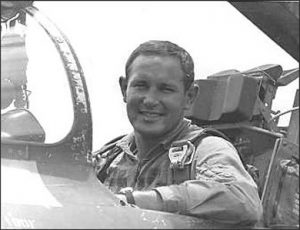 I had just joined the 494th TFS at Lakenheath, UK, after 500 plus hours of combat time at Phu Cat, SVN. I was on my first USAFE deployment, sitting Victor Alert at Cigli AB, Izmir, Turkey. The date was 1 May 1969 – MAYDAY (How appropriate!) Carl Jefcoat and I were on a low level training mission that went south over Ephesus then turned east along the southern coast of Turkey, north over Cleopatra’s Baths and then back west to Cigli near Usak, Turkey.
I had just joined the 494th TFS at Lakenheath, UK, after 500 plus hours of combat time at Phu Cat, SVN. I was on my first USAFE deployment, sitting Victor Alert at Cigli AB, Izmir, Turkey. The date was 1 May 1969 – MAYDAY (How appropriate!) Carl Jefcoat and I were on a low level training mission that went south over Ephesus then turned east along the southern coast of Turkey, north over Cleopatra’s Baths and then back west to Cigli near Usak, Turkey.
Approaching Usak, I noticed an unfamiliar, consistent vibration. I asked “Jef” to look me over to see if I had a loose tail hook or split wing tank fin. Nothing abnormal; so we did a mil power acceleration check to see if there were any difference s in power. Checks were good and the vibration seemed to diminish; so, we headed to the target (an abandoned airfield) and made a few simulated bombing passes. A quick fuel check indicated that we could continue back to Izmir low level. I had just descended back to 300 feet AGL, pushing the power up to maintain 420 KTAS, when the motor just quit. I said: “Jef, I think I just flamed out?” He said, “No SHIT!” as he blew by. I immediately started trading altitude for airspeed and jettisoned all of the external stores. Next came the air start procedures – throttle idle, emergency fuel, airstart switch- on. As I peak out around 3,000 feet AGL, I established a 220 KIAS glide while waiting for the engine to light. Nothing was happening so I stop-cocked the throttle, counted to ten, and returned it to the idle position. The EGT started up along with the RPM. SHIT HOT – this is looking good! I was trying to be patient with the throttle since I was in Emergency Fuel mode; however, there was a ridgeline coming up that I needed to clear. Matching RPM and EGT, I kept squeezing out more thrust. Meanwhile, Jef is calling out altitudes. As I was going through 1,000 feet AGL and the RPM just above idle, the engine flamed out again, and Jef told me I had raw fuel coming out the back end.
As I was telling Jef that I was getting out, I was already raising the ejection handle with my right hand. I dropped my left hand down on the left handle, slapped my head back and squeezed the triggers. I was around 600 – 800 feet AGL. The initial portion of the ejection sequence was perceived in slow motion. I watch the glare shield slowly slide away below me, the 781 and low-level maps seemed to just float along with me as I came up the rails away from the airplane. As the seat started to tilt backward, the butt-snapper fired, kicking me out of the seat. As it did, I was pitched head down and lost the horizon. It looked like the ground was very close, so I put out my arms – like that was going to do any good. My senses must have been very acute, because I heard the chute unraveling from my backpack. Good chute! I reached down and released the survival kit and then started assessing a place to land as the plane impacted the ground in a spectacular display of fireworks.
I saw a man plowing with a horse and being a farm boy from Illinois, I “ripped four (four-line cut)” and tried to steer toward the farmer. I quickly discovered that the wind was strong (estimated at 20+ knots). I gave up on picking my landing spot and got into the pre-PLF position. The chute immediately aligned with the wind. I went over a ridgeline and down the back side facing forward. I hit hard, then went ass over tea kettle, bounding down the mountain. I ended up on my back with my feet propped up against a scrub tree. I knew there was something that I needed to do urgently but couldn’t think of it. Finally, it dawned on me that I could be dragged to death by the wind. I quickly unclipped the harness releases and then took another 5 minutes to extricate myself from the parachute. As I bounded down the mountain, I had wound myself up in the shroud lines and canopy. First business was to get the radio out of the survival kit, call Jef, who was orbiting above, and find out when I was going to be picked up.
Jef was orbiting high overhead talking to another F-100 overhead Cigli. Jef didn’t have good news. I was out of range of the HH-43 Kaman Husky and there were no roads near me. The closest helicopters with sufficient range were at Wheelus and they would take several days to get there. They suggested that I continue down the mountain and wait in the valley below. Meanwhile, the farmer came running down the mountain yelling Allah, Allah. His eyes were wide and he was pointing to the sky. I wasn’t sure what to do. I had a hunting knife on the back of my G-suit, but instead stuck out my hand and said: “Me Americano.” He smiled shaking his head. I threw the chute and survival kit in the deployed raft. The Turk was puzzled that I had a raft in the middle of Turkey, but he helped me carry the raft down to the valley to a rock-walled sheep/goat corral. Soon a number of other Turks started arriving; some with articles from the cockpit – 781, maps, even the canopy. One arriving farmer was mad as hell, waving his arms and shaking his fists at me. Apparently, the plane landed on his property. I found out later that the airplane had bounded over an artesian well after impact but no one was injured.
With evening approaching, a T-29 was sent out from Cigli to boost my morale. I was informed that they were working the problem but no pickup today. So I settled in, smoked a few Turkish cigarettes – they were really strong with no filters. The Turks brought in a goat, killed it, put it on a spit and roasted it. We also had warm goat’s milk to drink. The legend was that if you bailed out in Turkey and spent the night, you would be offered the virgin of the village. Thankfully, that legend proved to be false – I didn’t see any attractive Turkish women in this camp. I dozed off and on throughout the night. At first light, one of the Turks pointed to the south and mouthed: WAP! WAP! WAP! I grabbed the radio and vectored the HH-43 to the coral.
Slung under the HH-43 in a cargo net was three 50-gallon barrels. The rescue guys had been innovative. They went to the wharf in Izmir, purchased the net, filled the barrels with JP-4, dropped them in the corral, then landed beside them. Using a rotary hand pump, we transferred the 150 gals of fuel into the HH-43 – adequate to return to the Izmir. We left the empty barrels behind and flew back to Cigli AB.
Epilogue: The vibration was due to the N-2 stator collar failing and compressor blades from one section were grinding against another. Eventually, the blades were distorted sufficiently to interrupt air flow, particularly at high RPM settings. This was the first of several engine failures due to this problem.
